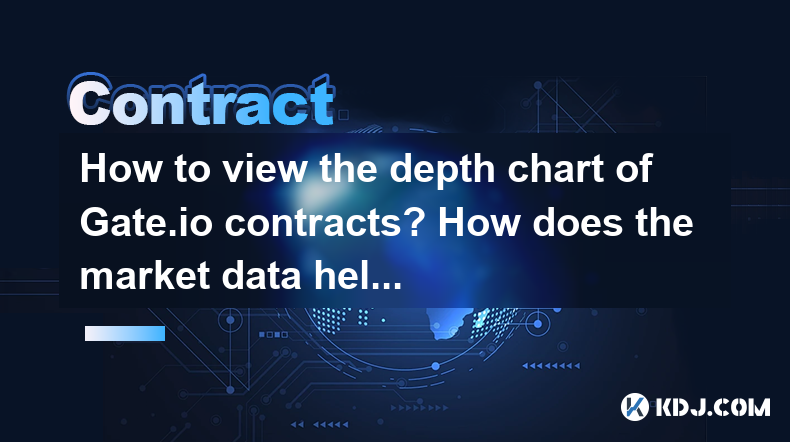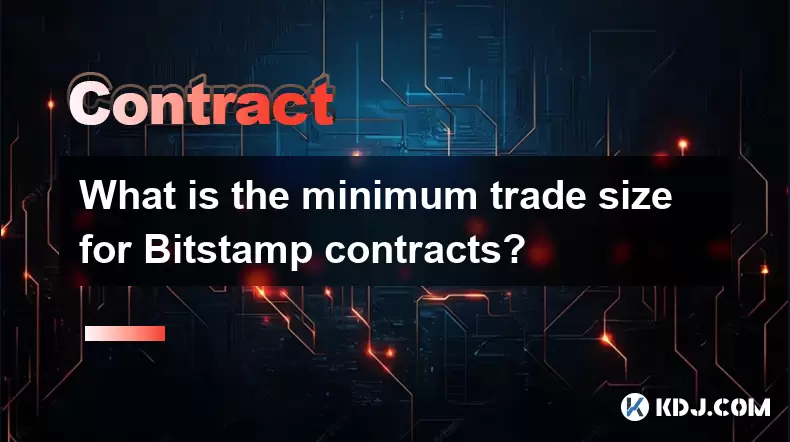-
 Bitcoin
Bitcoin $118900
1.66% -
 Ethereum
Ethereum $3735
1.35% -
 XRP
XRP $3.506
0.71% -
 Tether USDt
Tether USDt $1.000
-0.01% -
 BNB
BNB $799.4
5.78% -
 Solana
Solana $202.0
1.87% -
 USDC
USDC $0.9999
0.00% -
 Dogecoin
Dogecoin $0.2661
1.89% -
 Cardano
Cardano $0.8877
1.59% -
 TRON
TRON $0.3173
2.45% -
 Hyperliquid
Hyperliquid $45.00
2.59% -
 Stellar
Stellar $0.4723
3.40% -
 Sui
Sui $3.970
1.32% -
 Chainlink
Chainlink $19.67
1.94% -
 Hedera
Hedera $0.2710
1.99% -
 Avalanche
Avalanche $25.74
-0.01% -
 Bitcoin Cash
Bitcoin Cash $528.1
1.98% -
 Litecoin
Litecoin $120.1
3.57% -
 Shiba Inu
Shiba Inu $0.00001525
1.26% -
 UNUS SED LEO
UNUS SED LEO $8.989
-0.01% -
 Toncoin
Toncoin $3.304
1.74% -
 Polkadot
Polkadot $4.531
3.38% -
 Uniswap
Uniswap $10.74
2.51% -
 Ethena USDe
Ethena USDe $1.001
0.00% -
 Monero
Monero $325.5
2.44% -
 Pepe
Pepe $0.00001413
1.31% -
 Bitget Token
Bitget Token $4.860
0.85% -
 Dai
Dai $0.9999
0.01% -
 Aave
Aave $307.3
-2.07% -
 Bittensor
Bittensor $448.8
2.91%
How to view the depth chart of Gate.io contracts? How does the market data help short-term trading?
The depth chart on Gate.io helps traders gauge market liquidity and identify potential price movements for effective short-term trading strategies.
May 07, 2025 at 02:49 am

The depth chart on Gate.io is an essential tool for traders, especially those engaged in short-term trading of cryptocurrency contracts. Understanding the depth chart can provide valuable insights into market liquidity and potential price movements. This article will guide you through the process of viewing the depth chart on Gate.io and explain how market data can be utilized to enhance short-term trading strategies.
Accessing the Depth Chart on Gate.io
To view the depth chart on Gate.io, you need to follow a few simple steps. Here's how you can do it:
- Log into your Gate.io account. If you do not have an account, you will need to create one and complete the verification process.
- Navigate to the trading section. Once logged in, go to the trading section of the platform where you can see different trading pairs.
- Select the contract you want to trade. Gate.io offers various futures and perpetual contracts. Choose the one you are interested in.
- Find the depth chart tab. On the trading interface, look for the tab labeled "Depth" or a similar indicator. Clicking on this will open the depth chart for the selected contract.
Understanding the Depth Chart
The depth chart on Gate.io is a visual representation of the order book, showing the cumulative volume of buy and sell orders at different price levels. The chart typically consists of two colored areas:
- The green area represents the buy orders, also known as the bid side. This shows the total volume of orders willing to buy the contract at various price levels.
- The red area represents the sell orders, also known as the ask side. This indicates the total volume of orders willing to sell the contract at different price levels.
By analyzing the depth chart, you can gauge the market's liquidity and potential support and resistance levels. A deeper market indicates higher liquidity, which can lead to smoother price movements and lower slippage during trading.
Utilizing Market Data for Short-Term Trading
Market data, including the depth chart, can significantly aid in short-term trading. Here's how you can use this information to your advantage:
- Identifying Support and Resistance Levels: The depth chart can help you identify potential support and resistance levels. A high concentration of buy orders at a certain price level may act as a support level, while a high concentration of sell orders can indicate a resistance level. These levels can guide your entry and exit points in short-term trades.
- Assessing Market Sentiment: The depth chart provides insights into market sentiment. If the buy side is much deeper than the sell side, it suggests bullish sentiment, and vice versa. This information can help you decide whether to go long or short on a contract.
- Timing Your Trades: Short-term traders often look for quick price movements. By monitoring the depth chart, you can identify potential price breakouts or breakdowns. For instance, if the price approaches a level with a thin order book on one side, a breakout or breakdown is more likely to occur.
- Managing Risk: Understanding the liquidity of the market is crucial for risk management. A market with low liquidity can result in higher slippage and more significant price gaps, which can be detrimental to short-term trading. The depth chart helps you assess the market's liquidity and adjust your position sizes accordingly.
Practical Example of Using the Depth Chart
Let's consider a practical example to illustrate how the depth chart can be used in short-term trading:
- Suppose you are trading the BTC/USD perpetual contract on Gate.io. You open the depth chart and notice that there is a significant concentration of buy orders at $30,000 and a notable concentration of sell orders at $30,500.
- Based on this information, you identify $30,000 as a potential support level and $30,500 as a potential resistance level. You decide to enter a long position if the price approaches $30,000, anticipating a bounce off this support level.
- As the price moves closer to $30,000, you monitor the depth chart to ensure the support level remains strong. If the buy orders at this level are still significant, you execute your long position.
- Once the price starts to rise, you keep an eye on the resistance level at $30,500. As the price approaches this level, you prepare to exit your position, either by taking profits or setting a stop-loss just below the resistance level to minimize potential losses.
Interpreting Market Data Beyond the Depth Chart
While the depth chart is a powerful tool, it is not the only market data you should consider for short-term trading. Other important data points include:
- Price Charts: These provide a historical view of price movements, which can help you identify trends and patterns. Using technical indicators like moving averages, RSI, and MACD can further enhance your analysis.
- Volume Data: Trading volume can confirm the strength of price movements. High volume during a price increase suggests strong buying interest, while high volume during a price decrease indicates strong selling pressure.
- Order Flow: Some platforms offer order flow data, which can give you insights into the real-time buying and selling activity. This can help you anticipate short-term price movements more accurately.
Combining Depth Chart Analysis with Other Strategies
To maximize the effectiveness of the depth chart in your short-term trading, consider combining it with other trading strategies:
- Scalping: This involves making numerous small trades to profit from minor price movements. Using the depth chart, you can identify areas with thin order books where price movements are more likely to occur, enabling you to execute quick trades.
- Breakout Trading: This strategy involves entering trades when the price breaks above resistance or below support levels. The depth chart can help you identify these levels and anticipate potential breakouts or breakdowns.
- Momentum Trading: This strategy focuses on trading assets that are moving significantly in one direction. By analyzing the depth chart, you can assess the strength of the momentum and decide whether to enter or exit a trade.
FAQs
Q: Can the depth chart be used for long-term trading strategies?
A: While the depth chart is primarily useful for short-term trading due to its focus on immediate liquidity and order book dynamics, it can still provide valuable insights for long-term traders. For instance, understanding the market's liquidity can help long-term traders manage their entry and exit points more effectively, especially during volatile market conditions.
Q: How often should I refresh the depth chart during trading?
A: The frequency of refreshing the depth chart depends on your trading strategy and the volatility of the market. For short-term trading, it's advisable to refresh the depth chart frequently, ideally every few seconds to a minute, to stay updated with the latest order book changes. For less volatile markets or longer-term strategies, you might refresh it less often, perhaps every few minutes to an hour.
Q: Are there any tools or indicators that can be used in conjunction with the depth chart to enhance trading decisions?
A: Yes, several tools and indicators can complement the depth chart. Volume Profile can help you identify price levels with high trading activity, which can act as support or resistance. Order Flow Indicators provide real-time data on buying and selling pressure, which can confirm or contradict the information from the depth chart. Additionally, Technical Indicators like moving averages, RSI, and MACD can help you identify trends and potential reversal points, enhancing your overall market analysis.
Disclaimer:info@kdj.com
The information provided is not trading advice. kdj.com does not assume any responsibility for any investments made based on the information provided in this article. Cryptocurrencies are highly volatile and it is highly recommended that you invest with caution after thorough research!
If you believe that the content used on this website infringes your copyright, please contact us immediately (info@kdj.com) and we will delete it promptly.
- Ethereum Whale Activity & Volume Surge: What's the Hype?
- 2025-07-23 20:50:12
- Pepe Dollar, Bitcoin Maxis, Presale Explodes: What's the Hype?
- 2025-07-23 21:10:14
- U Power, EVs, and Web3: Charging into the Future
- 2025-07-23 20:30:13
- Marriage, Divorce, and Prediction: Navigating the Murky Waters of Matrimony
- 2025-07-23 20:55:13
- Ethena's ENA: Fee-Sharing Sparks a DeFi Revolution?
- 2025-07-23 21:15:13
- OKX Delisting & Listing: Navigating Margin Pair Changes in Crypto
- 2025-07-23 20:30:13
Related knowledge

Why is my Bitstamp futures position being liquidated?
Jul 23,2025 at 11:08am
Understanding Futures Liquidation on BitstampFutures trading on Bitstamp involves borrowing funds to open leveraged positions, which amplifies both po...

Does Bitstamp offer inverse contracts?
Jul 23,2025 at 01:28pm
Understanding Inverse Contracts in Cryptocurrency TradingIn the realm of cryptocurrency derivatives, inverse contracts are a specific type of futures ...

How to find your Bitstamp futures trade history?
Jul 23,2025 at 08:07am
Understanding Bitstamp and Futures Trading AvailabilityAs of the current state of Bitstamp’s service offerings, it is critical to clarify that Bitstam...

Can I use a trailing stop on Bitstamp futures?
Jul 23,2025 at 01:42pm
Understanding Trailing Stops in Cryptocurrency TradingA trailing stop is a dynamic type of stop-loss order that adjusts automatically as the price of ...

What is the minimum trade size for Bitstamp contracts?
Jul 23,2025 at 07:14pm
Understanding Bitstamp and Its Contract OfferingsBitstamp is one of the longest-standing cryptocurrency exchanges, established in 2011, and known for ...

How to trade ETH perpetuals on Bitstamp?
Jul 23,2025 at 03:28am
Understanding ETH Perpetual ContractsETH perpetual contracts are derivative products that allow traders to speculate on the price of Ethereum without ...

Why is my Bitstamp futures position being liquidated?
Jul 23,2025 at 11:08am
Understanding Futures Liquidation on BitstampFutures trading on Bitstamp involves borrowing funds to open leveraged positions, which amplifies both po...

Does Bitstamp offer inverse contracts?
Jul 23,2025 at 01:28pm
Understanding Inverse Contracts in Cryptocurrency TradingIn the realm of cryptocurrency derivatives, inverse contracts are a specific type of futures ...

How to find your Bitstamp futures trade history?
Jul 23,2025 at 08:07am
Understanding Bitstamp and Futures Trading AvailabilityAs of the current state of Bitstamp’s service offerings, it is critical to clarify that Bitstam...

Can I use a trailing stop on Bitstamp futures?
Jul 23,2025 at 01:42pm
Understanding Trailing Stops in Cryptocurrency TradingA trailing stop is a dynamic type of stop-loss order that adjusts automatically as the price of ...

What is the minimum trade size for Bitstamp contracts?
Jul 23,2025 at 07:14pm
Understanding Bitstamp and Its Contract OfferingsBitstamp is one of the longest-standing cryptocurrency exchanges, established in 2011, and known for ...

How to trade ETH perpetuals on Bitstamp?
Jul 23,2025 at 03:28am
Understanding ETH Perpetual ContractsETH perpetual contracts are derivative products that allow traders to speculate on the price of Ethereum without ...
See all articles

























































































